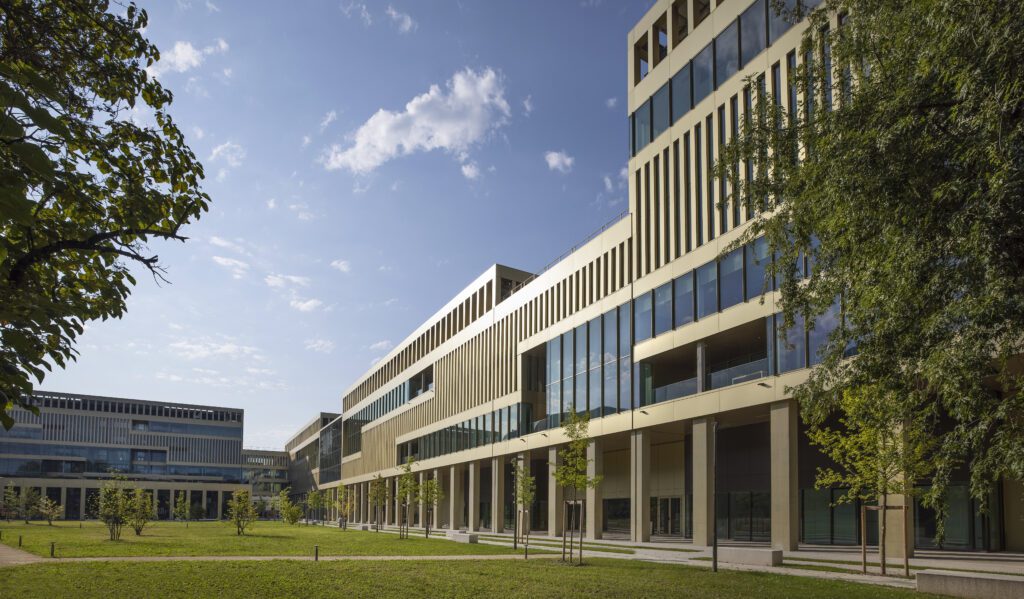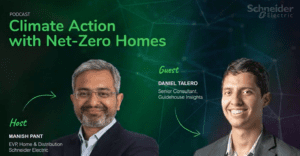This audio was created using Microsoft Azure Speech Services
The breakneck pace of innovation isn’t slowing down. In fact, it’s accelerating as new technologies, from A.I., big data and the Internet of Things, embed themselves in every aspect of our daily lives. The allure of technology has also contributed to a new wave of urbanization on every continent. Over half of the global population already lives in cities, and that figure is set to reach 70% by 2050[1]. In addition to providing extra space to support an exploding population, cities are expected to become more liveable, more work-friendly and above all, more sustainable. Buildings could hold the key to all of three of these goals, making Building of the Future one of the top sustainability topics.
According to International Energy Agency[2], buildings are responsible for about 40% of global energy consumption and about one-third of global GHG emissions. This means the buildings we construct today will be crucial for the evolution of smart cities and achieving the net-zero carbon targets that are critical to combatting climate change.
What can governments, industry and the community do to ensure efficiency, resilience, comfort and sustainability in the way we live? Schneider Electric believes the answer is to embrace the digital innovation that is at least partly responsible for increasing urbanization, and use it to create better, and more efficient outcomes while minimizing waste.

Tailor-made for tomorrow
Take Schneider Electric’s IntenCity, for example. Located in Grenoble, France, this new net-zero energy development is a real-life example of what a smart and efficient building can be. Going beyond sustainability, it was created with the future of work and people in mind. Built to support newer, more flexible, and more collaborative ways of working, IntenCity is unique and remarkable.
Designed with Schneider Electric’s advanced energy performance model in mind, IntenCity is tailor-made to be an integral part of the energy landscape of tomorrow. With innovation at its core, it is a practical example of the vision of an all-digital, all-electric world. A place where buildings are natively more sustainable, resilient, hyper-efficient, people-centric environments that actively contribute to achieving net zero goals.
Turning data into actionable insights
As concrete proof of Schneider Electric’s 4-step decarbonization strategy for buildings, IntenCity takes active measures to cut down on CO2 emissions from its operations by reducing energy and replacing fossil-fueled energy with renewables.
IntenCity can also monitor and report back on energy and carbon KPIs digitally, using connected devices, edge control, and advanced analytics. IntenCity is smart enough to be usage-driven. For instance, its Building Management System and associated analytics draw on 60,000 separate data points, allowing it to balance efficiency, resiliency and comfort.
Smarter energy means less energy
IntenCity uses 10 times less energy than the average European building. To put that into perspective, while the average consumption of Europe’s existing buildings is estimated to be about, 330 kWh/m2/year, IntenCity targets an annual consumption of 37 kWh/m2/year. That is offset by more than 4,000 m2 of photovoltaic panels fitted to the roof and two vertical wind turbines, which make the building virtually energy independent.
All of the energy used is provided by renewable sources. In addition to consuming only what it really needs, IntenCity can actually stock energy and deliver it to external users, thus making it a Net Zero operator as well as a contributor to the energy grid.
As a smart grid-ready building, IntenCity is already a part of the energy landscape of tomorrow. Technical solutions are in place to allow it to interface with the other buildings in the neighbourhood as part of a local network. It can also defer consumption in favor of neighbouring buildings, or opt out in the event of high demand or high tariffs, and rely instead on stores of renewable energy.
Promoting collaboration, comfort and efficiency
Team collaboration is at the core of Schneider Electric’s work of enabling team members to drive innovation collaboratively. That includes IntenCity, which is inherently designed to fit the future of work.
In order to involve all residents, every aspect of the building was carefully studied to offer an ideal environment for different teams. A high-performance IT infrastructure also enables connectivity and seamless communications with people within and outside of the organization.
The sustainability journey is just beginning
The smart building sustainability journey isn’t over, it’s really just beginning. What is certain is that there is no limit to what can be accomplished when it comes to designing the Building of the Future.
As a real-world showcase, IntenCity offers some valuable lessons. First, how to leverage innovation and digitization to create a connected building. And eventually a connected world, with net-zero emission at its core and people at its heart.
Know more how Schneider Electric is transforming Home of the Future.
[1] https://www.weforum.org/agenda/2021/11/urban-sprawl-to-net-zero-melbourne/
[2] https://www.iea.org/events/iea-at-cop26-the-role-of-energy-efficient-buildings-on-the-path-to-net-zero-strategies-for-policy-makers



